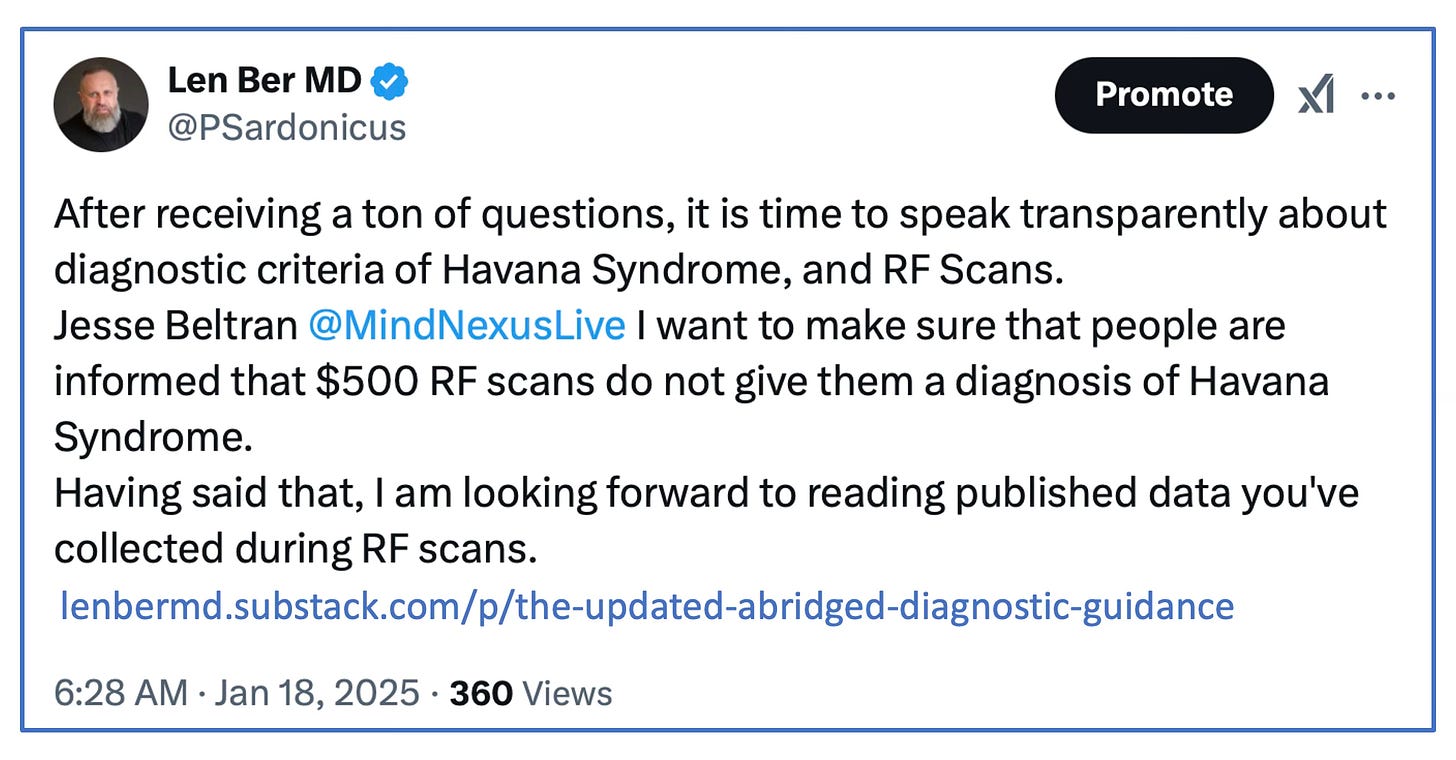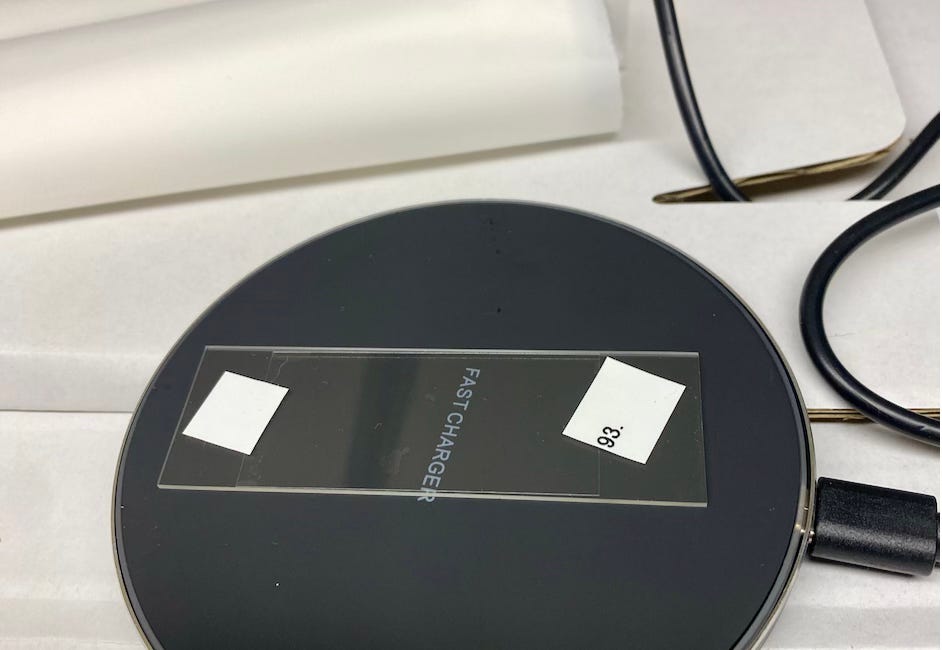I have received (and keep receiving) a ton of inquiries about RF scans, and whether they could be used to diagnose Havana Syndrome. The short answer is no. The long answer: they can provide useful information for a novel hypothesis of Havana Syndrome which is currently not the leading explanation for this phenomenon, but could be a part of it once we have more data (It’s also possible that various mechanisms are involved in diffferent cases. Or RF tech could have a separate clinical representation).
I stated on multiple occasions that I strongly support efforts to conduct RF scans, especially if they are preformed in a methodologically sound fashion, data is collected, and presented for public and scientific consumption.
On January 18, 2025 I posted this Tweet on X.com:
I was glad to see a detailed response by @MindNexusLive posted on January 24, 2025.
( However, I am afraid Mr. Jesse Beltran took my tweet the wrong way. I didn’t say @MindNexus Live was claiming to diagnose Havana Syndrome using RF scans; rather that people percieive it this way, which is why I received a slew of questions.) Here is his tweet in its entirety, which I will be referring people to when more questions arise.
At no point have we claimed, nor will we ever claim, that an RF scan can diagnose Havana Syndrome or any other medical condition. Our RF scanning services are designed solely to detect and document anomalous frequencies around a person's body. This is a technological process, not a medical one, and its purpose is to provide individuals with tangible data that may assist them in further investigation or corroborate their experiences.
The RF Scanning Process
Purpose: Our RF scans aim to detect anomalous radio frequencies that may indicate external or environmental interference. These frequencies are measured and documented using advanced tools such as the JM 20 Pro Frequency Detector and the ACECO FC1003 Frequency Reader.
Procedure: The scan is conducted in a controlled environment to ensure accuracy.
Frequencies around specific anatomical regions are measured, with results recorded for later analysis.
All scans are video-recorded for transparency and included in the final report for the client.
Outcome: Clients receive a comprehensive report detailing the detected frequencies and signal strengths. However, it is essential to emphasize that this data is informational and not intended for medical diagnosis or treatment.
Why We Do It
The RF scan provides clients with tangible evidence of frequency activity around their person. This can be helpful for:
Personal documentation.
Supporting further investigations with experts in other fields.
Building evidence for individuals who feel targeted by unexplained phenomena.
We also want to ensure transparency about what our services do and do not provide. RF scans are not a diagnostic tool for Havana Syndrome or any condition.
They are a step toward empowering individuals to investigate and understand the anomalies they may be experiencing, and they often serve as a starting point for further exploration with other experts.
If you have more questions or would like to learn more about our scanning process, please feel free to reach out. Thank you for helping us spread accurate information about what we do and why we do it.
I would like to thank Jesse for this defenitive answer, and for his clear communication. I think he is doing an important work. I have personally spoken on this technology, just take a look at my Substack Feed. I have also conducted a formal study on MAC Address Emission which remains in the top 2% articles accessed on Academia.edu.
Humans are Not Supposed to Emit Radio Waves…
I am sharing the results of the study we just completed and published on Academia.edu.
I also conducted multiple optical microscopy studies on the subject of self-assembly technology in pharmaceutical products, including “Independent Confirmation of Findings by Lee & Broudy, 2024: Presence of Undeclared EMF-Sensitive Compounds in Injectable Anesthetic.”
Independent Confirmation of Findings by Lee & Broudy: Presence of Undeclared EMF-Sensitive Compounds in Injectable Anesthetic
If you have not seen 2024 paper by Lee & Broudy (including Response to Critics) on the topic of Self-Assembly of Artificial Constructs in Injectable modRNA Materials published in peer-reviewed IJVTPR…
So, I am not a stranger to RF emission technology, and there is no conflict between what Jesse Beltran is doing at MindNexusLive and what I am doing at Targeted Justice. Neither there is a personal conflict between us. Jesse reached out to me, and we had a substantive conversation about this technology.
I am glad we can all move forward with our projects, and I think collaboration is warranted. Our data could be complimentary, and having a united front can only strengthen our common mission: ending the use of pulsed EM technology on civilians.





Good to know all the methods being used.
RF scans are detecting RF implants only. :)